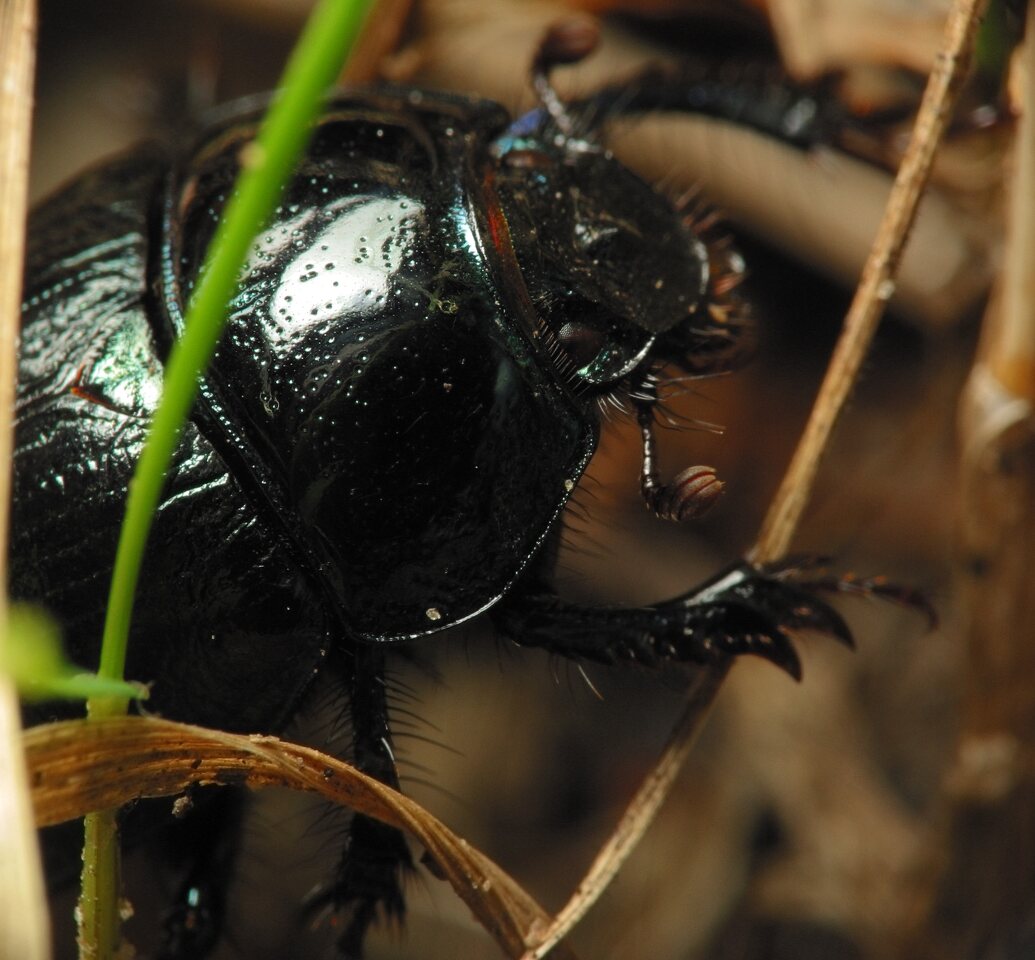
Anoplotrupes stercorosus · miškinis mėšlavabalis
- Scarabaeus stercorosus
- dor beetle
- Waldmistkäfer
- miškinis mėšlavabalis
- meža bambals, meža mēslvabole
- żuk leśny
Adults can be encountered from June through the following spring. These dung beetles feed on feces, rotting fungi and tree sap. In spring they lay eggs in chambers at the end of a corridor dug in the soil that is approximately 70–80 cm long, in which feces of herbivorous and omnivorous animals are placed to feed the larvae. The larvae overwinter and pupate in spring, requiring a year to complete the whole process.
This beetle is present throughout Europe also found in other regions of the world where cattle have been introduced, such as Australia. It is very similar to Geotrupes stercorarius which has three keels on the outer side of the hind tibia, while A. stercorosus only two.
Plačiai paplitęs Eurazijoje. Kūnas 10 – 20 mm ilgio, juodas, blizgus. Gyvena miškuose. Minta žolėdžių gyvūnų išmatomis. Kaip ir kiti mėšlavabaliai, miškinis mėšlavabalis iš mėšlo sudaro rutuliukus, į kuriuos padeda po kiaušinėlį. Vėliau išsirita lerva ir minta rutuliuko turiniu.
‥